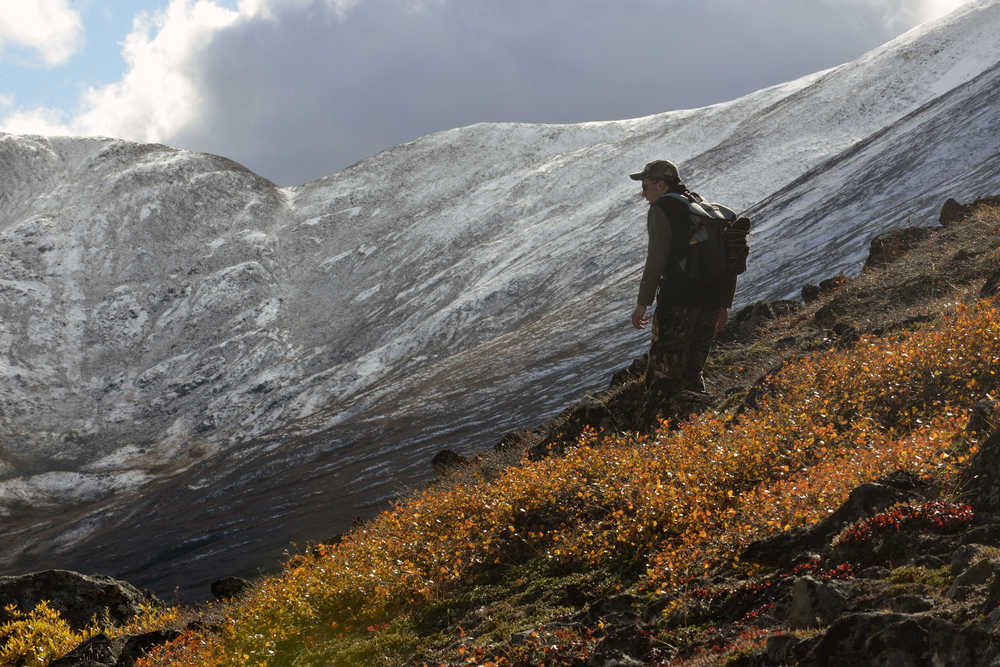A mile is a relatively short walk — until one has to walk it after a severe accident.
Teeming with lakes and trails and overlapping with the Chugach National Forest and Kenai National Wildlife Refuge, the Kenai Peninsula is a hiker’s dream playground. For those who are less experienced or adventurous, short trails or those that can be finished in a day might seem more appealing.
Shorter trips, however, don’t mean less exposure to the elements or fewer chances that something could go wrong, according to Leah Eskelin, a park ranger at the refuge, and Jeremy Lilly, group vice chairman at the Alaska Mountain Rescue Group.
“A mile turns into hours,” Eskelin said of daytrips when hikers get injured.
There are several simple things hikers can do and pack prior to a daytrip to protect themselves in the event something goes south.
One of the biggest mistakes hikers make is not telling anyone of their day plan because their trip will be so short, Eskelin said. Another is heading out underprepared under the assumption that not much can go wrong on a day hike, she said.
“When you have a plan that only is a two-hour hike, you may not even think about bringing something as simple as a first aid kit,” Eskelin said. “We get really comfortable thinking that we can just call for help if we need it, but there’s a lot of trails that start in cell coverage and, very quickly, you don’t have any coverage.”
It’s important to pass a plan and instructions for when to call for help on to someone who will not wait too long to call, she said.
Lilly, a retired survival evasion resistance escape specialist from the U.S. Air Force, also teaches survival and rescue courses, and breaks them down into different areas of preparation for hikers.
“You’re looking at five basic needs,” he said, describing them as personal protection, both physical and psychological health, sustenance, travel and signaling.
When it comes to personal protection, Lilly said even day hikers need to pack something with which they can start a fire — waterproof matches or a lighter — as well as something that could be used for shelter overnight, like a light tarp or emergency blanket.
Eskelin added that packing an extra layer as well as hats and gloves, even during summer months, is important in the event a day hiker has to stay out overnight.
“We tend to underestimate the amount of clothing we’re going to need on short walks,” she said, citing Alaska’s unpredictable weather as another reason to pack extra clothes.
For sustenance, Eskelin suggests bringing more than just the basic water and snack. When she leads hikes, for example, she makes sure to bring foods with both high and low sugar content, in case anyone on the trip suddenly needs to balance their sugar levels.
Having something like a candy bar can also be calming to someone who has gotten injured on the course of the hike, she said.
Packing a basic first aid kit for a daytrip will allow hikers to treat minor injuries along the trail, Lilly said. To keep psychological health intact, he also stressed the importance of relaying a detailed hiking plan to someone else before leaving so hikers can be sure they have people looking for them if they don’t return as scheduled.
The Alaska State Troopers have forms on their website that hikers can fill out and leave with the person who knows their plan, he said. They include information like destination, the skill level of the hiker and what he or she was last seen wearing, all of which can help rescuers in an emergency, Lilly said.
When it comes to signaling, Lilly said there are several small things hikers can pack. From the more obvious communication devices like a cellphone or satellite communication device, to a mirror, packing multiple forms of communication is key, he said.
Eskelin also stressed that satellite communicators should not be solely relied upon, saying one of the most important things a day hiker can do is bring multiple forms of communication. By packing a satellite phone, a cellphone and a radio, hikers minimize the chance of being completely cut off if one of them breaks or runs out of batteries.
“It’s all technology, so all of it could fail,” Eskelin said.
Mirrors work well because they can be seen from an average of 50 miles away, and even up to 100 miles away, Lilly said. They also help rescuers pinpoint a person’s location more accurately, he said.
“Mirrors are responsible for more rescues than any other device,” Lilly said.
In a pinch, Lilly said smoke signals or even brightly colored clothing can be used to help rescuers narrow in on a stranded hiker’s location.
Eskelin recommended keeping a pre-packed bag ready to grab on the day of a trip, as rushing to pack and plan the day of can lead to forgetting things. More important than hikers packing the tools for a day trip is making sure they know how to use them, Lilly said.
Often, the Alaska Mountain Rescue Group has been called out to help someone who did not practice with or turn on their GPS device until they were already lost, he said.
“For anything that they plan on carrying for a daypack … whatever it is, take it out and play with it before you plan on taking it for the emergency situation,” Lilly said.
There are several organized rescue groups across the state that are called on by the Alaska State Troopers to help find people in emergency situations, Lilly said. Those interested in starting or becoming part of one can contact the troopers, and can visit www.aksearchrescueandsurvivaltraining.com for information on survival courses Lilly teaches.
Reach Megan Pacer at megan.pacer@peninsulaclarion.com.

